It's no secret that I love bamboo -- just take a look at the tags listing on the right side of this page and you'll see that the "bamboo" tag is by far the most-used. Why do I love growing bamboo so much? I can't say definitively, but besides its look and its vigor, the one thing that makes it such an exciting plant is its unpredictability.
Its explosive growth above ground is easily seen, but under the soil -- at least in the case of running bamboos that spread via rhizomes -- you don't know exactly what's going on. You know it's doing something, and is probably growing several rhizomes, but unless you dig around you're not going to have any indication of the plant's spread until the spring when it produces shoots.
That's mysterious and exciting to me. Where will the new shoots emerge? What size will they be? How many of them will the plant produce? When will they break through the ground, and how tall will the culms get? There aren't many plants that can surprise you like bamboo can.
In the case of a newly-planted bamboo, especially with a species that I haven't been growing before, these questions are even more applicable. Yes you can read about how a certain species is a "rampant runner", or how another species is a "prolific shooter", but because climate, growing conditions, soil type, weather, and other factors all contribute to the plant's behavior, you won't really know what the bamboo is going to do in your garden until you see it for yourself.
Such is the case with one of my newest plants: this Phyllostachys atrovaginata. I planted it a little while ago in the spot where I removed the raised bed planter of another species of bamboo. I knew the plant had a good rhizome system because it was visible when the pot was removed, but I had no idea how much those rhizomes would grow this first year.
A couple of weeks ago I noticed this little shoot, growing just to the side of the existing culms:
That discovery was exciting but I didn't expect any of those little "survival shoots" to be produced by this plant since it was an established potted plant, not a freshly-dug field division. The other morning though, I saw these two guys:
Now that's exciting! These are about 5 feet away from the existing culms, and they show me that the rhizomes have made it at least this far from the plant in just 2 months or less!
But is that what it's really showing me?
My first thought was that these are atrovaginata shoots, and I should be pleased.
My second thought was "why are these shoots growing now?" Usually it takes a rhizome disturbance to cause these small shoots to appear, so is something "disturbing" the rhizomes? I know that there is a mole tunnel that goes under this area, and I know that voles will use mole tunnels. I also know that voles will eat rhizomes and the buds on rhizomes, and that this can trigger these "survival shoots". This got me a little worried. If voles eat all of the rhizome buds that means no new shoots next year, and no new rhizomes either. The plant would be in trouble.
My third thought occurred to me a day or so later: maybe these aren't atrovaginata shoots at all. Perhaps they really are survival shoots from the old plant that was here -- there's always the chance that I left a few small rhizome sections buried in the ground, and those are the rhizomes that are producing these shoots. If that's the case, then I'm not so excited anymore.
Not excited, but I'm also not too worried because these tiny shoots will most likely not survive the winter, leaving those orphaned rhizomes (if that's what is producing these shoots) with no food source. Without a source of food they will die (or produce more survival shoots in the spring).
I think the only way I'm going to know for certain is to either get the opinion of somebody who's been growing atrovaginata for a while (like Brad at Needmore Bamboo, where I got this plant) and see which type of shoot these are, or wait until the spring and see if I get any shoots that appear to be the species I removed (Phyllostachys aureosulcata). The two species have shoots that appear to be quite different, at least on mature plants, and they shoot at different times in the spring, so I should be able to tell them apart.
So although I'm not really sure if I should be excited about finding these shoots, I still am, and I'll be even more excited in the spring. I just can't help it.

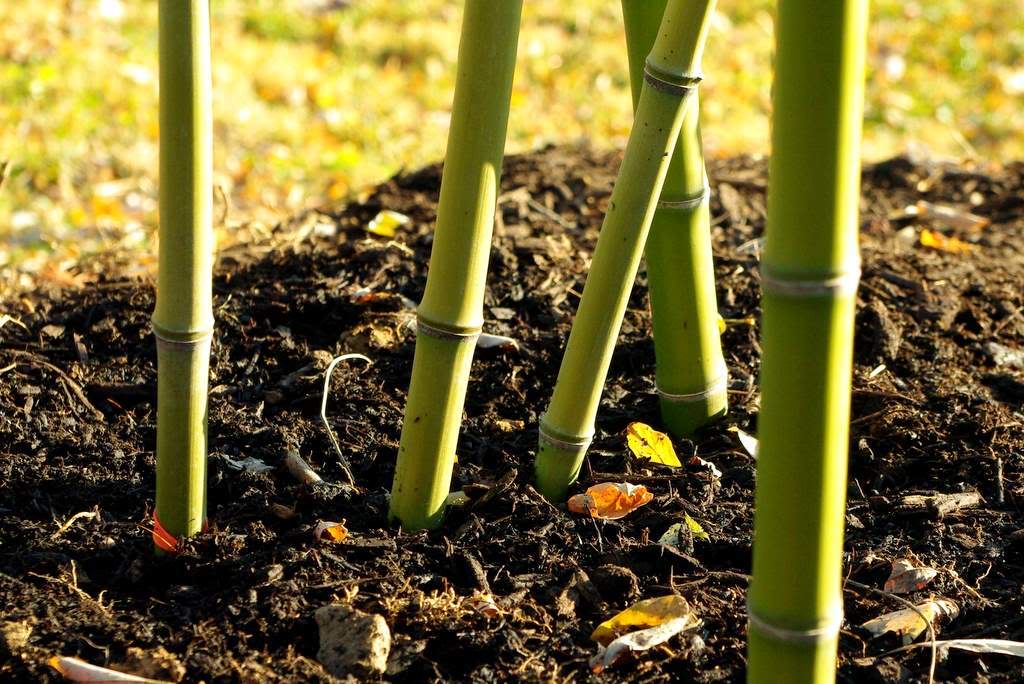
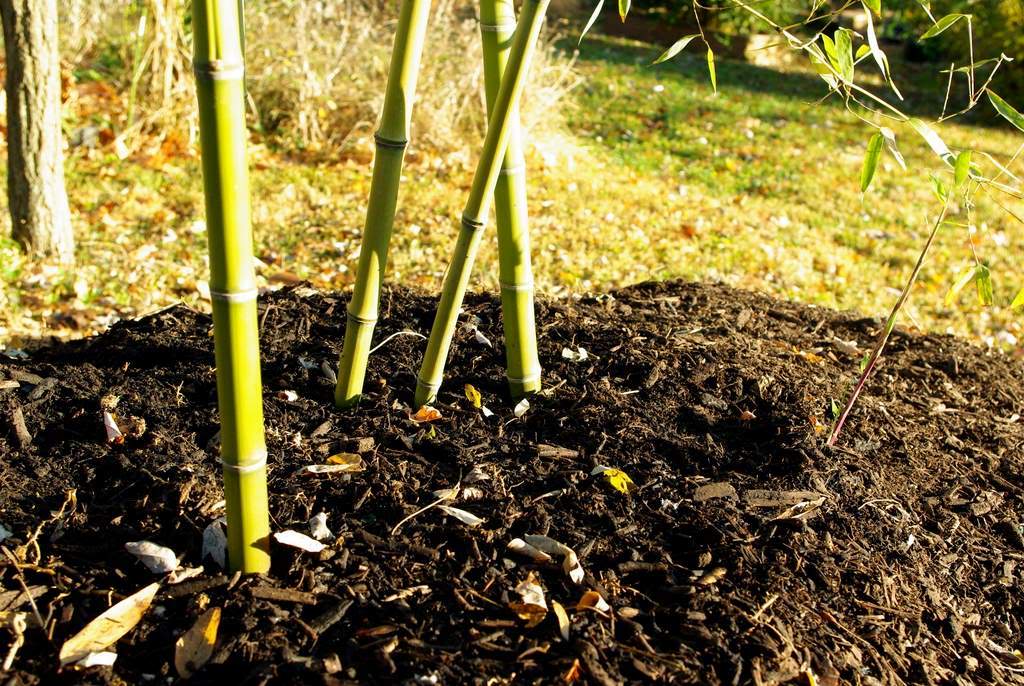
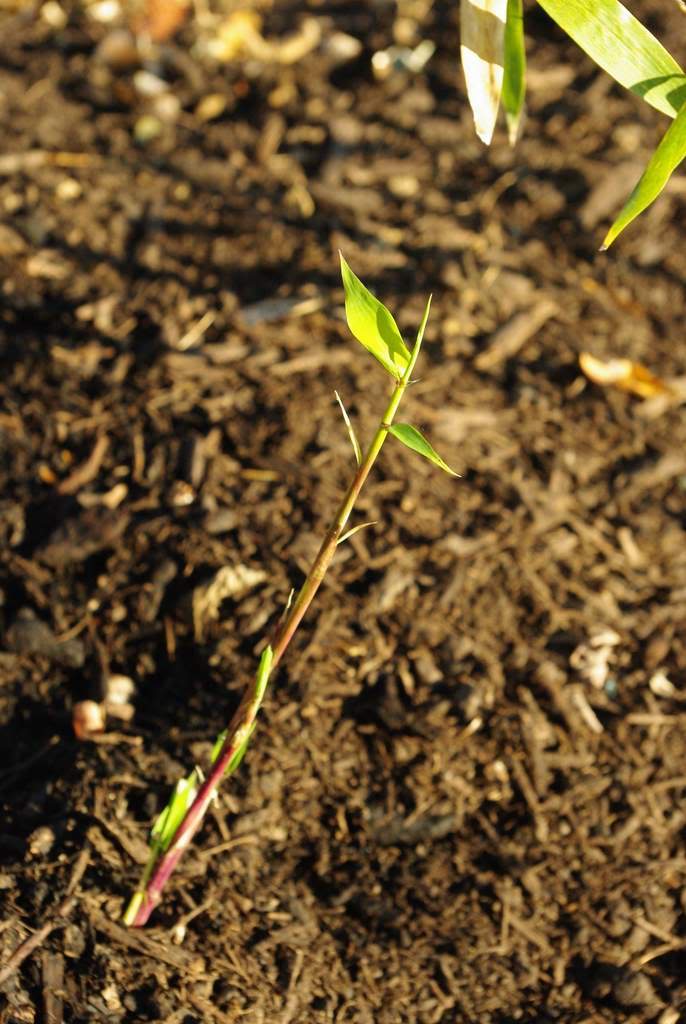

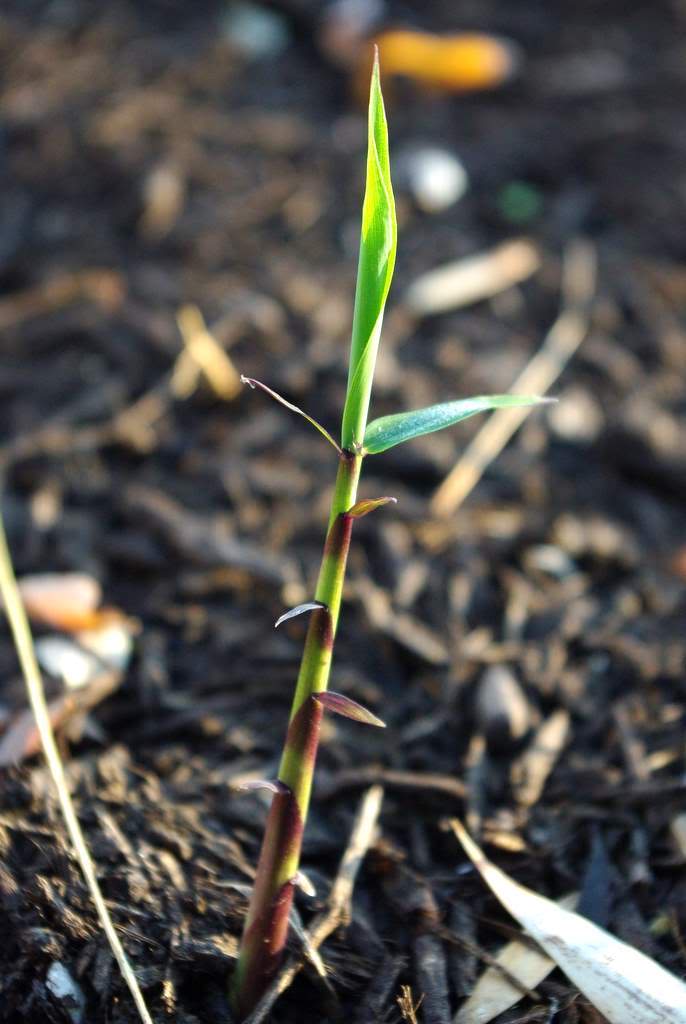

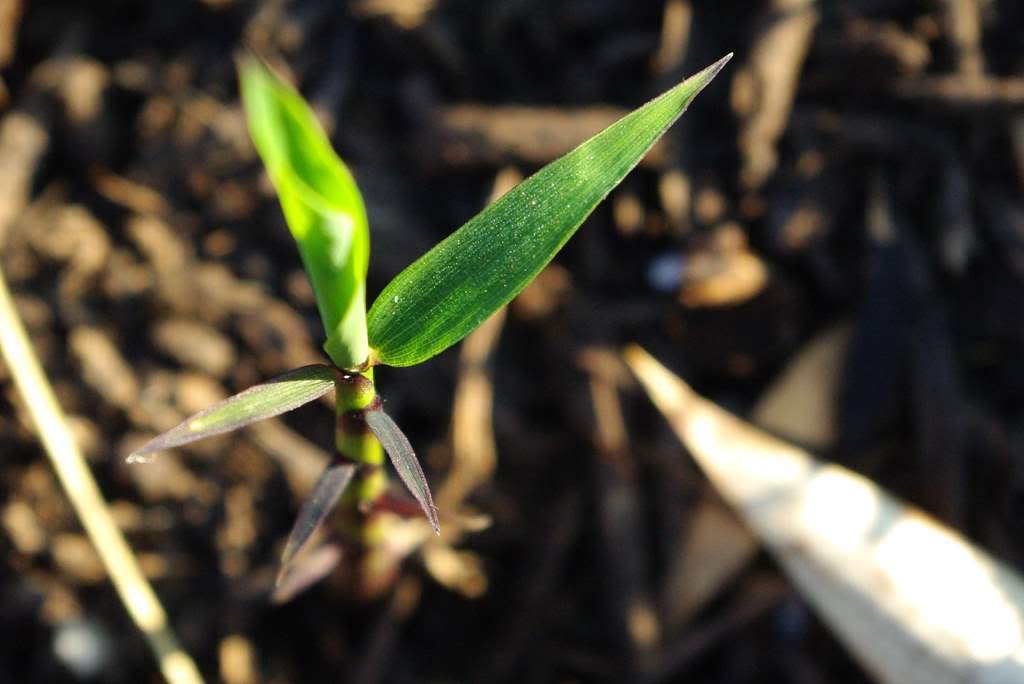
I'll be looking forward to seeing some shoot photos on that large atrovaginata next spring.
ReplyDeleteIt is a very hardy bamboo which shouldn't top kill on an average zone 6 winter so I think you will have shoots at least as large as the existing culms instantly by next year. I expect mine to triple in size since it's going onto its 3rd year, but I started with a 2 gallon plant in 2009.
I'm eager to see what it does in the spring too Steve! I try not to get my hopes up though -- I'd rather expect 1/2" culms and get a 1" one than the other way around.
ReplyDelete